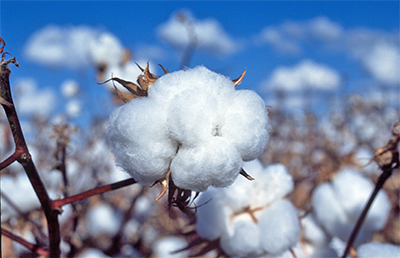Australian cotton - 'Three good reasons for optimism'
AUSTRALIAN cotton producers seem confident of another good year ahead in international markets, with Rabobank research supporting that optimism.
With the Australian cotton harvest completed, growers were greeted with the prediction by Rabobank that domestic prices would remain strong – above $520 a bale – through 2017/18.

The Australian Cotton Outlook – Three good reasons for optimism report, authored by Rabobank commodity analyst Charles Clack, cited Australian dollar weakness, the premium for Australian cotton due to its quality, and global economic recovery as the three factors underpinning the local sector’s profitability in the near-term.
Mr Clack said the near and medium-term outlook boded well for growth and investment in Australia’s cotton industry – and there was additional cause for optimism from the prospect of recovering Chinese import demand.
“This is despite the anticipated softening in global cotton prices, with the recent run of high prices driving an expansion in global acreage,” Mr Clack said.
“The US is expected to drive much of the four percent increase in global plantings that is foreseen in 2017/18, but production could also increase in India, Pakistan and China.”
Mr Clack said the increased global availability of cotton for export was likely to place downward pressure on world prices, despite strong demand which is forecast to increase as economic growth improves.
“In the next 12 months, we don’t see the increase in cotton demand exceeding the anticipated hike in global cotton production,” Mr clack said.
“However, Australian cotton prices are expected to be largely buffered from any fall in international prices, as the Australian dollar provides some offset.”
The cash premium for Australian cotton, he said, was also expected to remain high – over alternative origins – owing to Australia’s off-cycle export season and superior fibre quality. Australia was also seen as having a freight advantage into Asia.
Mr Clack said these factors, as well as strong hand-to-mouth demand from spinning mills as they replenish stocks, should support Australian prices above A$520 per bale in 2017/18 – shoring up profitability for many growers next year.
“However, much will hinge on production prospects, with the current season throwing up many challenges and resulting in highly variable yields,” he said.
CHINA DIFFERENCE
The Rabobank report found with the world’s ‘cotton heavyweight’ China looking for imports by the end of the decade, a golden opportunity could open for exporters, particularly Australia.
It cites Australian cotton’s superior quality, off-cycle export year, and market access as factors that should see it hold considerable competitive advantage over many other exporters.
“China currently holds 50 million bales in reserve,” Mr Clack said, “which is equivalent to 54 percent of global cotton stocks. However at their current destocking rate, Rabobank anticipates China could reduce their stocks by close to 10 million bales per year.”
Mr Clack said this would see Chinese stocks return to a more manageable 20 million bales by 2019/20. At this point, with consumption remaining at a similar level, a supply deficit of around 10 million bales per annum would need to be filled by a substantial increase in local production or a change in government policy to allow for more imports.
“Although it is too early to call, it appears that a combination of both these factors will be required to fill this gap,” Mr Clack said. This would be “putting Australia in the ‘box seat’ to fulfil Chinese demand, given its geographic proximity, reputation for quality, and export focus”.
ends

 How to resolve AdBlock issue?
How to resolve AdBlock issue?